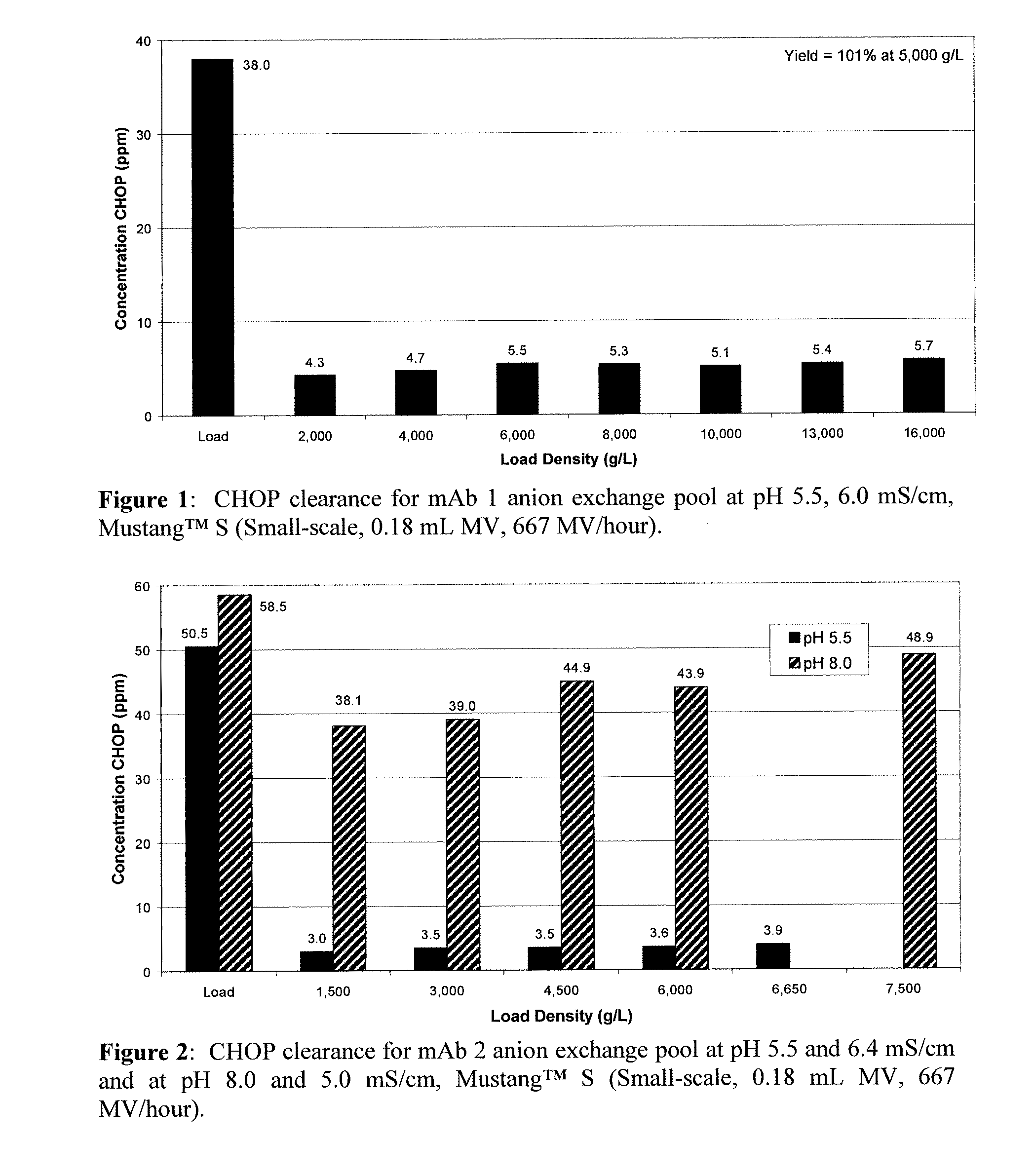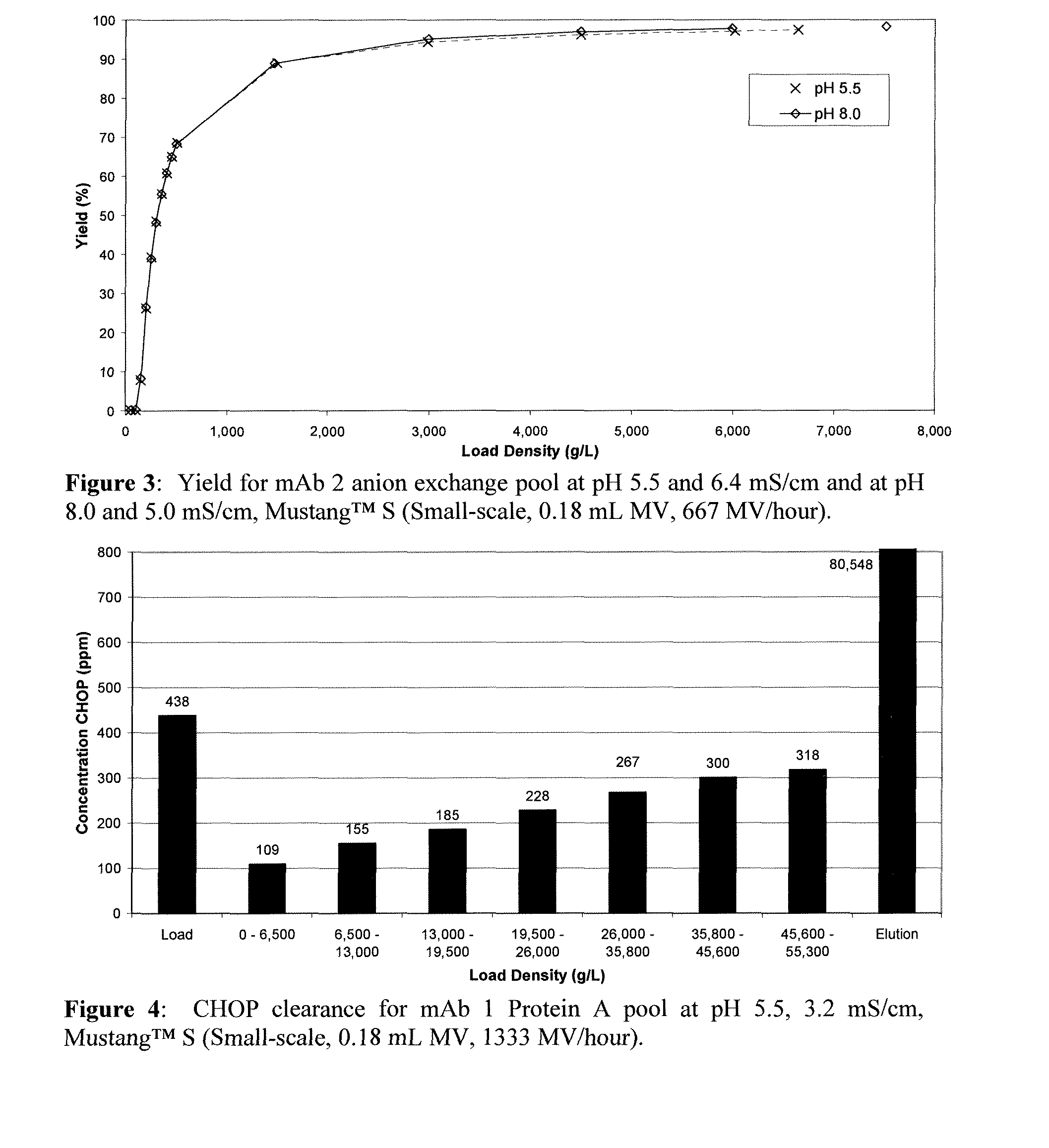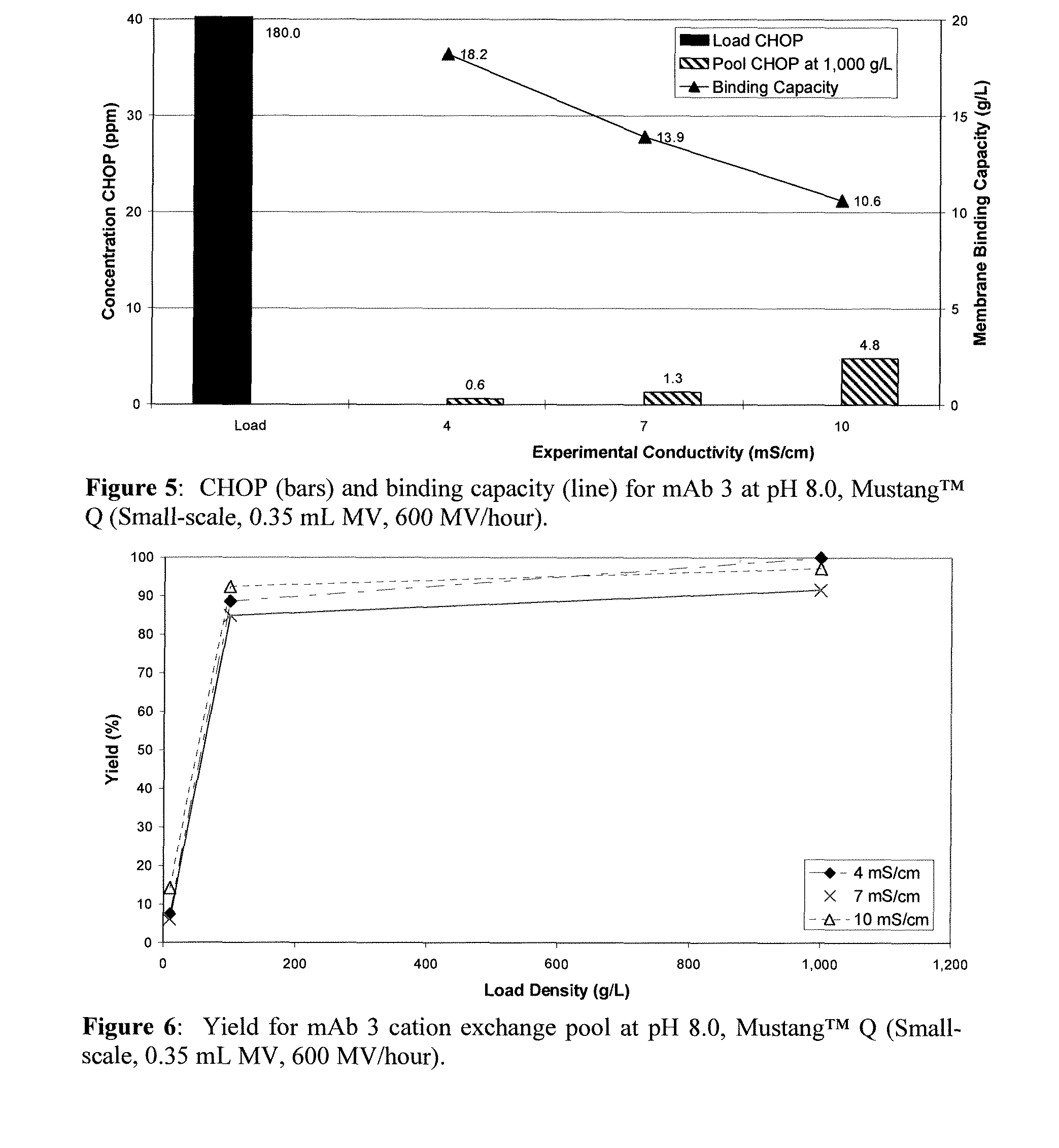Methods for removing a contaminant using indigenous protein displacement ion exchange membrane chromatography
a technology of ion exchange membrane and contaminant, which is applied in the field of protein purification, can solve the problems of difficult removal of subcellular fragments, economic purification of proteins, and difficult use as human therapeutics, and achieve the effect of enhancing the charge of polypeptides and low ionic strength
- Summary
- Abstract
- Description
- Claims
- Application Information
AI Technical Summary
Benefits of technology
Problems solved by technology
Method used
Image
Examples
examples
[0106]Introduction
[0107]Bioreactor titers for monoclonal antibodies (mAbs) are increasing as cell culture conditions improve. Larger batches of mAbs may be difficult to purify using traditional column chromatography. New resins with increased binding capacities may not be sufficient to avoid the need for cycling or running multiple columns in parallel. The inability to efficiently handle larger batches could negatively impact cost of goods and plant capacity. Additionally, the bioprocessing industry needs more convenient, cost effective tools in order to reduce cost of goods. Small, disposable purification technologies that can simultaneously reduce validation and labor costs are desirable. As the industry evolves, ion exchange membranes may become more advantageous for mAb processing.
[0108]Although column chromatography methods are robust and reliable, they generally have low mass throughput because separation performance is dependent on pore diffusion. Product and impurities must ...
PUM
| Property | Measurement | Unit |
|---|---|---|
| pore size | aaaaa | aaaaa |
| conductivity | aaaaa | aaaaa |
| conductivity | aaaaa | aaaaa |
Abstract
Description
Claims
Application Information
 Login to View More
Login to View More - R&D
- Intellectual Property
- Life Sciences
- Materials
- Tech Scout
- Unparalleled Data Quality
- Higher Quality Content
- 60% Fewer Hallucinations
Browse by: Latest US Patents, China's latest patents, Technical Efficacy Thesaurus, Application Domain, Technology Topic, Popular Technical Reports.
© 2025 PatSnap. All rights reserved.Legal|Privacy policy|Modern Slavery Act Transparency Statement|Sitemap|About US| Contact US: help@patsnap.com



